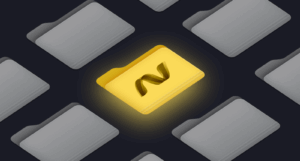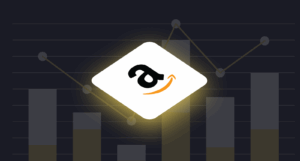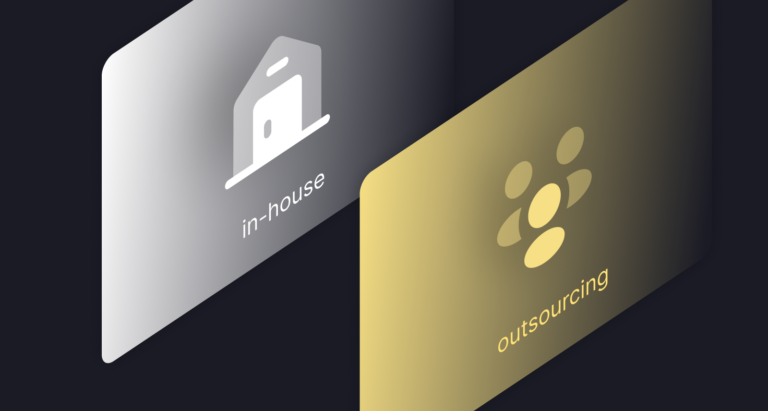
Creating a minimum viable product used to take months. Now, thanks to AI-powered tools, founders can build functional MVPs in just a few days. While this speed is exciting, it also introduces new challenges and trade-offs.
During our "MVP in 2 Days — Hype or Real Deal" live session, we received many thoughtful questions, more than we had time to answer live. This guide brings them all together, with detailed responses and practical insights to help you navigate fast-paced MVP development.
Below is a collection of Q&A-based takeaways gathered from real conversations with product builders, founders, and engineers.
1. What are the pros and cons of iterating a product’s MVP in minutes or days? Do VCs invest in such MVPs?
Building an MVP in two days, enabled by tools like Replit, Cursor, and VS Code with Copilot, offers significant agility but introduces unique downsides.
Upsides:
- Speed to market: Launch before competitors, capture early adopters, and validate ideas in real time.
- Cost efficiency: Minimized upfront investment; focus resources on core features only.
- Rapid learning: Accelerated feedback loops to pivot quickly based on user data.
- Investor attraction: Demonstrated execution capability and market traction faster.
Downsides:
- Technical debt: Rushed code may require rewrites for scalability, increasing long-term costs. To reduce this risk, use prepared presets: prebuilt structures, reusable components, and tested configurations that help teams start fast without compromising future growth.
- Superficial validation: Limited user testing can miss critical flaws or market nuances.
- Scope mismanagement: Under- or over-scoping can lead to unusable or delayed MVPs.
Investor Perspective:
VCs are open to fast MVPs if they solve real problems and are backed by a solid plan for scale, not just speed for their own sake.
2. What if I am not a developer? Can I still use AI-powered tools?
Modern AI and no-code tools let non-developers prototype and test ideas quickly. Non-technical entrepreneurs can focus on:
- Using AI/no-code tools for MVP. However, you still have to involve a technical expert later to check for security, scalability, and infrastructure risks.
- Prioritizing user feedback over technical perfection.
- Documenting requirements and planning before building.
- Bringing in technical help for review or scaling when needed.
- Creating a prototype early on so that engineers can later build an MPV much faster because they can better understand the business logic.
Learning some basic tech vocabulary helps to ask better questions and make smarter product decisions.
3. Can I build an MVP without code just in Figma?
Yes, tools like Figma make it easy to prototype without coding. It's perfect for creating clickable, interactive prototypes for early validation, feedback, and even investor presentations. If you need users to actually use core features (like sign-up or transactions), pair Figma with no-code app builders for a fully AI-powered MVP.
4. What tools can I use to build MVPs quickly? Where can I test the right users?
You can build MVPs fast using a range of no-code and low-code platforms and validate them with real users through user testing tools. This allows for rapid prototyping and ensures your product addresses real user needs.

5. Should I rethink “do things that don’t scale” now that AI makes scaling easier?
AI reduces the cost of scaling but does not eliminate the need for unscalable founder efforts. The advice "do things that don't scale" evolves: use AI to handle repetitive work, freeing founders to focus on high-impact, manual validation and customer relationships. Startups that blend AI in product development efficiency with hands-on learning will de-risk scaling and build stronger foundations. AI should augment human judgment, not replace the critical early-stage work of understanding user needs.
6. How capable are Lovable and Cursor for B2B MVPs, especially for non-technical founders?
Both Lovable and Cursor are strong options for building and deploying MVPs for B2B client testing. Lovable is especially easy for non-technical founders, while Cursor offers more flexibility for those willing to engage with code (with AI support). Both platforms are designed to minimize the traditional barriers to launching and iterating on an MVP, using AI MVP tools and no-code MVP environments.
7. What’s the most seamless and efficient tool combination?
It depends on your technical background. We recommend two paths.
If you're a non-technical entrepreneur:
- Design: Figma, Marvel
- Build: Lovable, Bubble
- Deploy: Webflow, Lovable
- Test: Maze, UserTesting, Hotjar
- Manage: Trello, Productboard, FigJam
This path emphasizes no-code tools with intuitive interfaces and built-in integrations. It allows fast MVP launch and quick validation without needing to write code.
If you're a technical entrepreneur or comfortable with AI-assisted coding:
- Design: Figma, Marvel
- Build: Windsurf, Cursor, Claude Code, Copilot Agent
- Deploy: Windsurf, Cursor
- Test: Maze, Hotjar, custom event tracking
- Manage: Jira, GitHub Projects, Linear
This combo is optimized for speed and flexibility, combining AI tools for startups with customizability and access to developer workflows.
For both tracks, using a mix of AI, pre-built skeletons, and clear version control helps bridge speed with scaling MVP efficiently.

8. What’s required to go from MVP to scale?
Not all MVPs built with AI MVP tools are the same. Some scale smoothly because the right decisions were made from the start. Others hit a ceiling. For example, they can’t handle high traffic, or their infrastructure lacks security and flexibility.
That’s why reviewing your MVP before scaling is crucial. Ask yourself what was assumed or skipped in the early phase, what was hardcoded or overlooked, etc. Here's what often needs to happen next:
- Review code and refactor: The MVP code may need to be cleaned up or rebuilt.
- Upgrade infrastructure: Early builds might not support scaling. Review traffic limits, hosting, database setup, and cloud configuration.
- Implement security: Add authentication, database separation, and middleware if missing.
- Apply technical skills: AI tools assist, but scaling still requires skilled engineers.
- Shift architecture: Move from quick fixes to robust, modular systems.
- Get market proof: One buyer isn’t enough, so prove consistent demand before growing the team or spending.
This process is critical when transitioning from a minimum viable product fast to a fully scaled solution using AI in product development.
9. Can you build a functional team on Replit, etc.?
Yes, tools like Windsurf and Cursor can support not only small, agile teams at the early stage, but also larger, distributed teams with the right setup. These tools already allow for collaboration, task management, and project memory sharing, making them useful beyond just initial validation.
For long-term work, what matters is how well the team is structured around the tool:
- Clear project planning
- Proper access control and workflows
- Strong documentation and communication habits
- Stable speed-up of development, even on large projects up to 30%
- Automation of routine engineering tasks
- AI-powered refactoring of legacy code
So, it’s not just about the size of the team, it’s about how well the team uses the tools.
10. Can AI-powered tools create the backend? How complex can apps be? How to fix errors fast?
Backend: Yes, tools like Windsurf and Cursor can build both front and back end, generate APIs, and handle logic.
Complexity: You can build surprisingly advanced applications, even 60–70% of a full product, but only if you're skilled enough to guide the tools well, as they don’t replace engineering expertise, only amplify it.
If you're experienced, you can set up project structure, styling, security presets, linters, and prompt rules that let AI do more of the work reliably. Without that foundation, the result may look functional but be hard to scale or maintain.
Fixing errors: Use built-in linters, commit changes often, keep prompts small, and always test locally.
For startups aiming to launch a product quickly or iterate rapidly, this blend of automation and control is key.
11. How to handle data security with quick MVP builds?
When you build an MVP quickly using tools like Windsurf and Cursor, it’s easy to forget about security, but that can be risky. You might accidentally leave API keys in your code, skip authentication, or expose your database without meaning to.
To stay safe:
- Use test data, not real user info.
- Add a security layer between your app and your data.
- Don’t share public links unless you’ve set proper access.
- Ask the AI to follow security best practices when generating code.
- Involve a technical person to know what to check and where to look.
12. What are the best practices and toolchains for MVPs?
Building an MVP today isn’t just about speed. It’s about clarity, structure, and learning fast. Based on the panel discussion, here’s what the experts recommend:
Best practices:
- Validate before you build: Talk to real users. Use your MVP to test one core idea or feature, not the full product.
- Keep it small and focused: Avoid scope creep. Start with a minimum differentiated product (the one feature that solves a real pain point).
- Use AI tools wisely: Don’t delegate critical design decisions to AI blindly. Prepare prompts, break tasks down, and use tools like TaskMaster to manage flow.
- Plan clearly: Create a PRD or spec, even for fast builds. It gives direction and reduces rework.
- Design for change: MVPs may be thrown away. Focus on learning, not perfection.
- Security matters early: Add guardrails, e.g., use middle layers, sandbox data, and avoid exposing credentials.
- Test early and often: Even solo builders can use linters, preview modes, and AI to spot bugs fast.
- Know when to rebuild: Sometimes it’s faster and safer to start fresh than patch a rushed MVP.
- Bring in someone with strong technical skills, ideally from the very start, to avoid bigger issues later.
Following these practices can help any team, including non-technical founders, go from a simple prototype to a validated startup MVP much faster.
Toolchain recommendations:

13. How to increase development speed, leverage AI, and maintain privacy?
- Use cross-platform frameworks and no-code/low-code builders for speed.
- Leverage AI tools for startups (Windsurf, Cursor, Claude Code, Copilot) for code generation and debugging.
- Protect codebase and data with encryption, access controls, and secrets managers.
- Train your team on security and have an incident response plan.
- Work only with licensed and trusted AI tools to ensure compliance, reliability, and support.
These steps help accelerate delivery while keeping your MVP for B2B SaaS or consumer apps secure and scalable.
14. To what scale can I run on vibe coding?
You can rely on vibe coding, using tools like Windsurf and Cursor, enhanced by AI agents for a surprisingly wide range of tasks.
Here’s what you can comfortably do with vibe coding:
- Build full-stack MVPs with working frontends and backends
- Prototype and iterate quickly on features and flows
- Automate boilerplate, CRUD operations, basic auth, and dashboards
- Integrate third-party APIs
- Spin up internal tools or admin panels
- Quickly rebuild or test new concepts
Where vibe coding reaches its limits:
- Long-term maintainability (AI can drift on architecture)
- Complex logic, AI/ML pipelines, or sensitive business-critical systems
- Security and compliance-heavy apps
- Deep optimization (e.g., performance tuning, memory management)
- High-scale infrastructure or multi-service orchestration
How to get more out of AI tools:
- Define prompt templates: include architecture, code style, and logic constraints
- Pair AI tools with linters, pre-commit checks, and tests
- Build a habit of reviewing and refactoring AI output, not just accepting it
- Choose licensed tools with enterprise readiness for team use
- Prepare project templates that act as a project template with linters and guardrails in place to ensure consistency and quality from the start
These practices help you validate startup ideas while avoiding long-term technical debt from rushed builds.
15. Does the expectation of an MVP change with a 2-day timeline?
Yes, expectations shift significantly. In most cases, a 2-day MVP is intentionally minimal, focused on validating one core idea quickly. It’s not expected to be robust or fully scalable. The priority is speed, feedback, and learning, not polish or technical depth.
However, if you’re working with a team that already has pre-built templates, reusable infrastructure, and fast alignment, it’s absolutely possible to deliver a production-ready MVP within 2 days — especially in known domains. For example, in our video, we showed a full prod-ready MVP built in under 40 minutes.
So, the answer depends on the team setup and level of preparation. Fast doesn’t always mean rough if the foundation is ready. This is how many startups achieve a fast MVP launch and early traction.
16. How to work with VCs as a creative person, without adding stress?
Working with investors as a non-technical, creative founder requires clarity, structure, and alignment. You're not just selling a product, you're building trust in your process and vision. Here's how to reduce stress and improve collaboration:
Be clear about your product
- Use mockups or visuals to explain your idea
- Describe the user, the problem, and how your solution helps
Be honest about your skills
- Focus on your strengths (e.g., user insight, design, vision)
- Be transparent about where you need technical support
Communicate with structure
- Prepare a simple deck with goals, roadmap, and early results
- Follow-up calls with written summaries
Show strategic thinking
- Explain how you’ll validate and iterate even without coding
- Mention tools, advisors, or collaborators you’re using
Choose aligned investors
- Look for VCs experienced with creative or non-technical founders
- Ask how they typically support early-stage creative teams
This approach aligns perfectly with the way AI MVP tools support lean, agile, and visual-first development processes.
17. What’s the next step after creating your MVP?
The next step is validation. Put your MVP in front of real users as soon as possible. Don’t wait to polish. Don’t jump straight into fundraising or scaling. First, put your MVP in front of real users, get feedback, and iterate fast. That mindset helps you focus on learning what works and what doesn’t, before you commit resources to growth.
Here’s how to approach it:
- Launch small with a test group or early adopters
- Gather feedback actively through interviews, surveys, or usage tracking
- Watch what users actually do, not just what they say
- Fix critical gaps fast — anything that blocks understanding or value
- Refine your core message based on real user behavior
- Do not scale until you've validated that your product truly solves a problem
18. Strategies to secure investor commitments
To secure investor commitments, you need more than just a good idea — you need to show traction, clarity, and the ability to learn fast. Investors want confidence that your startup can solve a real problem and move quickly in the right direction. Here are key strategies to help you get that “yes”:
- Validate with real users and show traction.
- Highlight one clear value.
- Pitch clearly and confidently.
- Show momentum and learn.
- Use your MVP in the pitch.
- Be transparent and trustworthy.
- Make a clear request.
This is where a well-executed minimum viable product fast becomes a powerful fundraising asset, especially when built using modern AI-powered MVP development tools.
19. What are the top 5 ways people use AI at work?
- Writing and debugging code: developers use AI tools to write functions, fix bugs, and refactor faster
- Automating repetitive tasks, such as data cleaning, formatting
- Generating content and emails, such as marketing copy, reports, and outreach drafts
- Analyzing data for insights, summarizing trends, generating visualizations, or spotting anomalies
- Optimizing workflows and scheduling, suggesting meeting times, auto-filling calendars, or streamlining task assignments
These use cases are now central to AI in product development, particularly during rapid prototyping or early MVP stages.
20. How do you coach your team to use AI tools?
Yes, we coach our teams on how to best use AI tools, as it's essential for effective development and integration. Here's how we typically approach it:
Structured training sessions: We organize internal workshops focused on real use cases, and we’ve held hackathons to test different tools hands-on.
Continuous learning and best practices: Before integrating tools into production projects, we test them on internal initiatives. This lets us evaluate performance and usability in a low-risk setting. Our team shares learnings openly, including working examples, edge cases, and limitations.
Collaborative and supportive culture: We create space for experimentation. Every team has go-to people who’ve explored specific tools more deeply and can guide others.
By combining real testing, hands-on events, transparent knowledge sharing, and team-driven workshops, we ensure our teams can use startup AI MVP tools not just efficiently, but effectively.

21. Can you build a complex full-stack app like LinkedIn on Lovable without coding?
Lovable can build a simplified LinkedIn-like MVP (profiles, basic feed, job board) without coding, but not a full-featured, scalable social network. For complex apps, combine AI tools for MVP with developer support.
22. If our ICP is B2B, but my SaaS MVP is ready for B2C earlier, should I pursue B2C revenue?
If you can pursue B2C revenue without jeopardizing your B2B vision or overextending your team, it can be a smart way to gain early momentum and market insights. Just keep your long-term B2B objectives and resource allocation in sharp focus.
This is where a lean MVP for B2B SaaS or a 2-day MVP for quick B2C testing becomes a strategic asset for dual-market experimentation.
Summing up
Nowadays, you don’t need weeks to launch an MVP anymore. With the right tools and a clear goal, two days can be enough to build something functional. We shared how founders and teams, including ours, use AI, no-code, and low-code platforms to quickly test ideas, get real feedback, and move forward without overbuilding. And now you can go from idea to launch in days, not weeks. If that’s your goal, just drop us a line.









